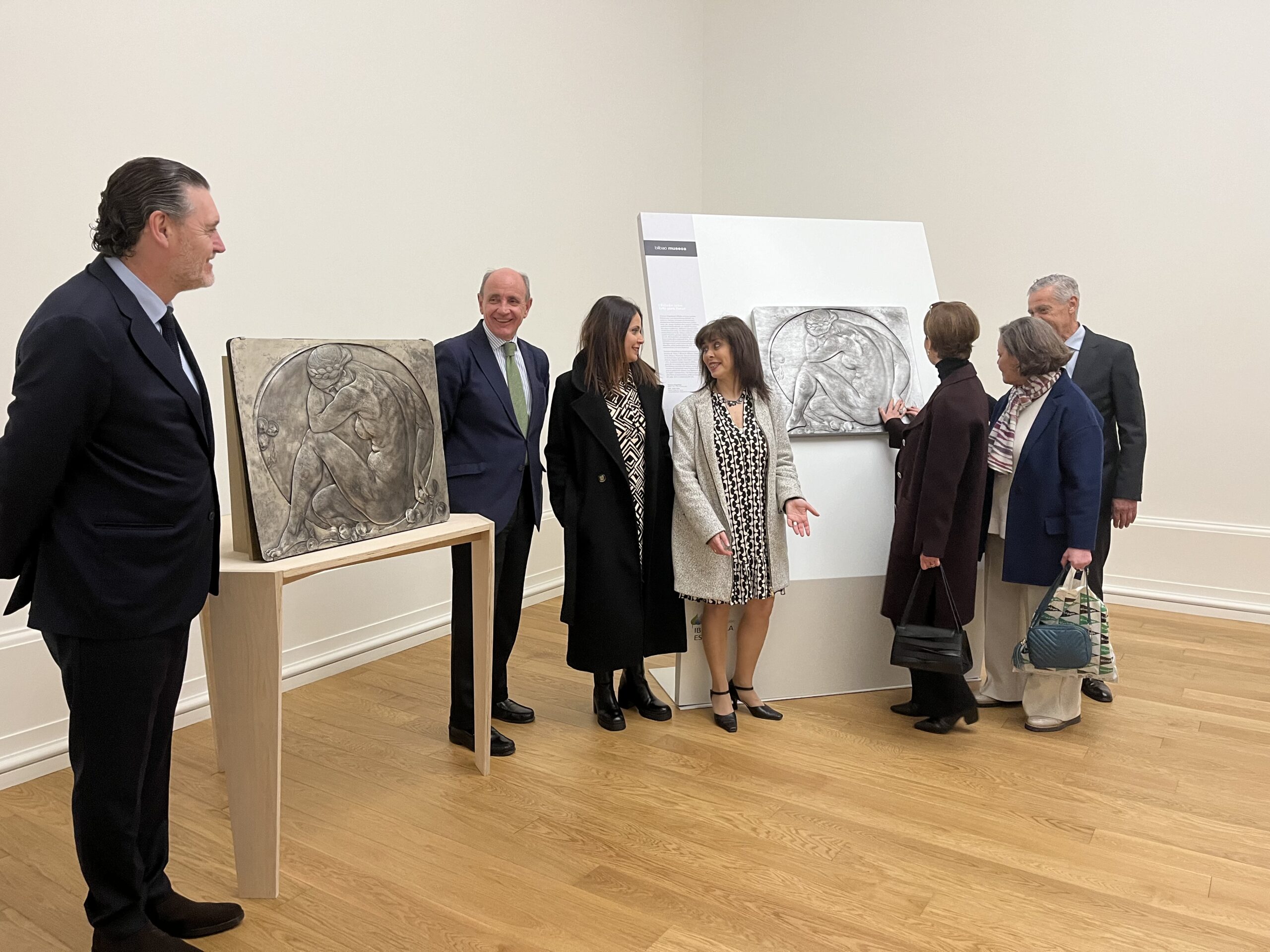Fundación Iberdrola and the Bilbao Fine Arts Museum bring ‘Arte para Tocar’ to the schools of Alava
- The main objective of this traveling exhibition is to make the learning and enjoyment of works of art accessible to people with visual disabilities
- Since 2018, when Fundación Iberdrola and the Bilbao BBAA Museum, together with the Department of Education of the Basque Government, decided to bring the experience to different locations in the Basque Country, 46 schools and 10,696 students have participated
Since 2012, Iberdrola and the Bilbao Fine Arts Museum have been collaborating in the ‘Art to Touch’ program, whose main objective is to make learning and enjoying works of art accessible to visually impaired people. A pioneering program of the BBAA Museum of the Biscayan capital that integrates the tactile experience within the museography practice using a didactic device that reproduces in relief a selection of works from the collection.
Along with the main purpose specifically designed for the visually impaired, ‘Arte para tocar’ also offers a sensory experience of awareness for all students. Led by educational staff, the activity is complemented with text materials -text in Braille and masks- and an explanatory audio guide in Basque, Spanish, and English.
After the good reception by the school system of the first editions, which were held in the museum itself, in 2018 the Department of Education of the Basque Government proposed to expand the scope of its objectives by organizing the itinerancy of this didactic accessibility resource through various educational centers in Bizkaia and Gipuzkoa. With equal success, since then, 46 educational centers and 10,696 students have participated in the program.
From January of this year until mid-June, a new itinerancy of ‘Arte para Tocar’ is being launched, this time through the educational centers of Alava. Once again, the support of Iberdrola has been joined by the collaboration of CRI -Resource Center for the Educational Inclusion of Students with Visual Impairment- which is part of the support services for diversity and inclusion of the Department of Education of the Basque Government.
Arte para Tocar 2024
From the five tactile works initially produced, the program has been expanding its offerings to the current nine panels, among which this year includes a new production: the silver relief ‘Eva’ (1908-1909) by Nemesio Mogrobejo (Bilbao, 1875-Graz, Austria, 1910). The work represents a female figure inscribed in a decorative border that reflects the influence of Art Nouveau on the Bilbao-born sculptor.
The nine works, which form a journey through various periods and artists in the museum’s collection, are the following:
- Catalan Romanesque, Noah’s Ark (last third of the 13th century).
- El Greco, The Annunciation (1506-1600)
- José de Ribera, St. Sebastian cured by the holy women (c. 1620-1623)
- Orazio Gentileschi, Lot and His Daughters (c. 1628)
- Mary Cassatt, Seated Woman with a Child in Her Arms (c. 1890)
- Adolfo Guiard, The Little Village Girl with the Red Carnation (1903)
- Nemesio Mogrobejo, Eva (1908-1909)
- Maria Blanchard, Femme assise (Seated Woman) (c. 1928)
- Francis Bacon, Lying Figure in Mirror (1971)
Fundación Iberdrola and Culture
Since its creation, Iberdrola has been committed to the energy, cultural, and social development of the communities in which it operates. In this regard, Fundación Iberdrola España represents a further step in this commitment by promoting initiatives that contribute to improving people’s quality of life. One of the areas on which it focuses its activity is cultural development and, especially, the care and maintenance of cultural and artistic wealth.
The collaboration with the Bilbao Fine Arts Museum is part of this area, which includes support for the Conservation and Restoration program, the creation of training and research scholarships in the field of conservation and restoration of works of art, and collaboration in the development of educational activities specifically designed to raise awareness of the museum’s collection among audiences with special needs due to visual or cognitive disabilities, or in social insertion programs.

